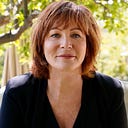

Discover more from Philanthropy 451
Why Nonprofit Boards Need Younger Voices—and More
From Millennials to Gen Z: Building Inclusive, Future-Proof Nonprofit Boards
Nonprofit boards have a responsibility to reflect the communities they serve and represent, and that means including voices of all ages. But age diversity isn’t just about adding a board member or two —it’s about truly strengthening the organization’s ability to achieve its mission, build lasting relationships with donors, and stay relevant in a rapidly changing world.
Right now, only 30% of nonprofit board members are under the age of 45 (Independent Sector, 2024), and full voting board members under 35 are extremely rare. Those numbers should be a wake-up call. A lack of age diversity creates a serious gap in perspective. Younger board members bring fresh ideas—particularly on urgent social and environmental issues. But more than that, they help build trust with younger generations and key demographics that nonprofits desperately need to engage.
Beyond fresh perspectives, bringing younger voices into the boardroom is about preparing for the future. These individuals are not only contributing to the conversation today; they’re your future leaders. Generational diversity strengthens the entire board by aligning it with modern values and helping nonprofits stay ahead of the curve in a constantly evolving philanthropic landscape.
The Real Case for Generational Diversity
Yes, younger board members bring valuable perspectives, especially when it comes to social justice, technology, and environmental sustainability. But simply adding them to check off a “diversity” box misses the point. It’s about recruiting the right younger members with unique skills, passion, and values that align with the organization and your mission.
Generational diversity is truly effective when you combine the fresh energy and perspective of younger members with the deep institutional knowledge of more seasoned board members. A strong board leverages that mix of innovation and experience to tackle today’s challenges in new, dynamic ways.
Building Authentic Relationships with Donors
Speaking as a major donor myself, I know this: board members are often the face of the organization to donors. This is one reason why having younger members matters—it helps bridge the gap with Millennial and Gen Z donors, who often look for authenticity and shared values in the causes they support. And tokenism, as always, doesn’t work. Don’t automatically relegate a younger person to your “next-gen” or “junior” board. (Some people prefer that for social reasons, but forcing a serious, committed donor to the “kid’s table” due to their age is not only offensive and demeaning but extremely short-sighted.)
Having a diverse board isn't enough on its own. The real impact comes from how well the board functions, leverages board expertise, and serves as “ambassadors” to donors (and to your community). Organizations with age-diverse board members, carefully selected, will almost always outperform those that have boards comprised of the same 20 people that of the same age and with the same backgrounds.
Rethinking the “Give/Get” Model
Here’s something I see all too often: the traditional “give/get” requirement is treated as a barrier when it doesn’t need to be. The assumption that younger professionals can’t or won’t meet a financial commitment is, in many cases, untrue. (Today there are over a 1MM millionaire donors under 30 in the US alone, and that number is growing.) The “give/get” risks both underestimating their abilities and capacity, and creating an unnecessary divide. The truth is, many young people are eager to give — they simply need opportunities that align with their interest, passion, and financial realities.
With a “give or get” model, you’ll find that some board members are better at one or the other. Although I believe that every board member can and should give some amount and can and should also participate in the “get”, there will definitely be a wide range of board members who prefer their financial contribution be mostly “give” or mostly “get”. Setting your board’s “give or get” minimum requirement shouldn’t mean lowering the bar or assuming younger board members need a “waiver”. Instead, it’s about recognizing that all board members, regardless of age or financial situation, can play a meaningful role in meeting their obligations. Whether it’s through direct contributions, fundraising efforts, or leveraging their networks and expertise, the “give or get” model provides a clear but flexible path to ensure every board member contributes to the organization’s financial health.
Cultivating Future Leaders Through Mentorship
When you bring younger members onto a nonprofit board, it’s not just about filling seats—it’s about building future leadership. But here’s the thing: that future needs to be nurtured.
Mentorship between older and younger board members is key. When done right, mentorship ensures younger members are learning from the wealth of experience their older counterparts bring, while also offering their own fresh perspectives. This collaboration strengthens the entire board, ensuring long-term sustainability and preparing the organization for what’s next.
How to Recruit and Engage Younger Board Members
If you want to recruit and retain younger members, you’ll need to think differently The old methods won’t cut it. Here are a few strategies that work:
Rethink Qualifications: Focus on the skills and expertise candidates bring, not just their financial contributions. Yes, expect them to give their part, but don’t make the money piece their entire contribution to board service.
Create Leadership Pathways: Establish mentorship programs that pair younger members with seasoned board members. Doing so will give younger members a sense of belonging and commitment to the organization’s long-term vision. It also shows respect and an understanding that a successful nonprofit prepares for the future.
Be Flexible with Financial Expectations: As explained above, consider adopting a “give or get” model in place of the standard (and often rigid) “give and get” model. Sometimes board members are better at one or the other, and any part they play in fundraising is of value. Often a personal referral from a young board member to a new donor will result in a larger donation that your “give” minimum ever imagined.
Reach Beyond the Usual Networks: Look for younger board members where they’re already passionate—volunteer groups, young professional networks, and even universities. These individuals are often already engaged with your organization (as volunteers) and are likely to become some of your most committed board members. Some might be feeling ignored or under-utilized this very minute.
A Stronger Future for Nonprofits
At the end of the day, generational diversity is about more than just age. It’s about building a board that reflects your community, brings a mix of perspectives, and collectively has the right skills to move the organization forward. When you have younger and older members working together, it creates a powerful force for innovation, sustainability, and impact.
The world is changing, and nonprofits need to change with it. By thoughtfully embracing generational diversity, we can build boards—and organizations—that are ready to tackle today’s challenges and tomorrow’s opportunities.
Thank you to everyone who has chosen to become a premium subscriber! I look forward to our next monthly interactive Zoom call.
Save the date: Wednesday, October 16th at 12:30 pm ET/9:30 am PT
If you’re not already a Premium Subscriber, you can join us by upgrading your current subscription here!
As always, my usual free bi-weekly newsletters will remain free of charge.
Thanks for your continued support!
Lisa
Subscribe to Philanthropy 451
Welcome to Philanthropy 451, a weekly newsletter with my thoughts on the state of the nonprofit industry, including anecdotes, statistics, and helpful recommendations. I'm Lisa Greer and I'm obsessed with Saving Giving.












Hear, hear!
100%. There appears, to me anyway, a holding on of power until the last gasp. I see this with the Baby Boomer generation, and we Gen Xers have had time at some of the tables but not all. The older generations also see board service, I think, as a means to philanthropy and donations. The entire structure will change, regardless of what the older generations think, but there will be some conflict. I'm here for it because I think Millenials and Zs need to build their leadership and change the game. If we can frame this through lenses of all the skills and wisdom each generation brings, it will be better for all of us.